Profile
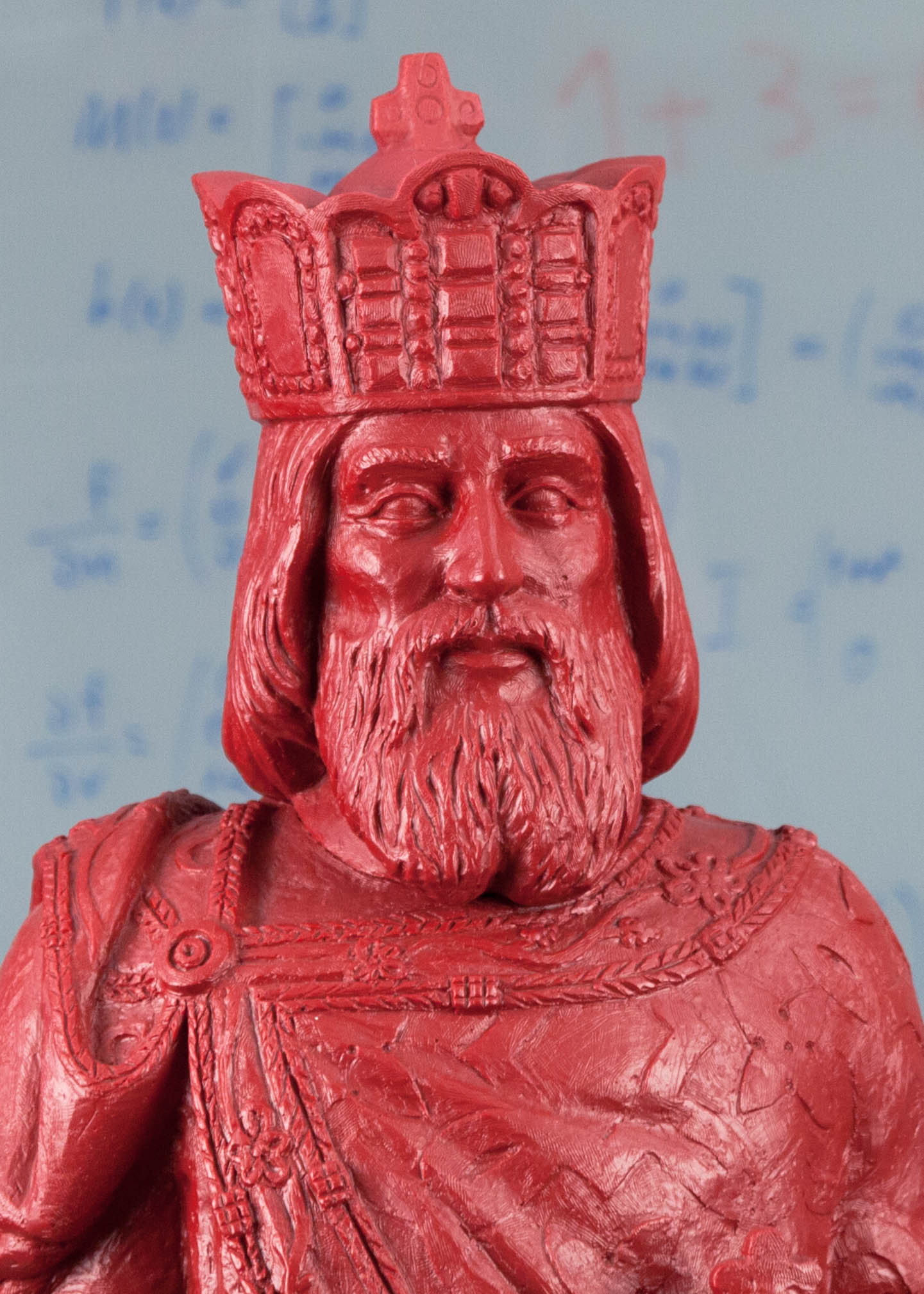
|
Dr. Daniel Bayer |
Publications
Robust Real-Time Deformation of Incompressible Surface Meshes

We introduce an efficient technique for robustly simulating incompressible objects with thousands of elements in real-time. Instead of considering a tetrahedral model, commonly used to simulate volumetric bodies, we simply use their surfaces. Not requiring hundreds or even thousands of elements in the interior of the object enables us to simulate more elements on the surface, resulting in high quality deformations at low computation costs. The elasticity of the objects is robustly simulated with a geometrically motivated shape matching approach which is extended by a fast summation technique for arbitrary triangle meshes suitable for an efficient parallel computation on the GPU. Moreover, we present an oscillation-free and collision-aware volume constraint, purely based on the surface of the incompressible body. The novel heuristic we propose in our approach enables us to conserve the volume, both globally and locally. Our volume constraint is not limited to the shape matching method and can be used with any method simulating the elasticity of an object. We present several examples which demonstrate high quality volume conserving deformations and compare the run-times of our CPU implementation, as well as our GPU implementation with similar methods.
SCA 2011 Honorable Mention
» Show BibTeX
@INPROCEEDINGS{Diziol2011,
author = {Raphael Diziol and Jan Bender and Daniel Bayer},
title = {Robust Real-Time Deformation of Incompressible Surface Meshes},
booktitle = {Proceedings of the 2011 ACM SIGGRAPH/Eurographics Symposium on Computer
Animation},
year = {2011},
publisher = {Eurographics Association},
location = {Vancouver, Canada}
}
Simulating inextensible cloth using locking-free triangle meshes
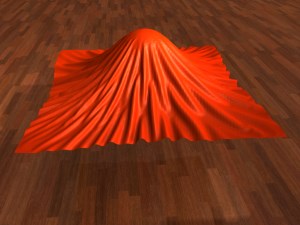
This paper presents an efficient method for the dynamic simulation of inextensible cloth. The triangle mesh for our cloth model is simulated using an impulse-based approach which is able to solve hard constraints. Using hard distance constraints on the edges of the triangle mesh removes too many degrees of freedom, resulting in a rigid motion. This is known as the locking problem which is typically solved by using rectangular meshes in existing impulse-based simulations. We solve this problem by using a nonconforming representation for the simulation model which unfortunately results in a discontinuous mesh. Therefore, we couple the original conforming mesh with the nonconforming elements and use it for collision handling and visualization.
@inproceedings{Bender11,
author = {Jan Bender and Raphael Diziol and Daniel Bayer},
title = {Simulating inextensible cloth using locking-free triangle meshes},
booktitle = {Virtual Reality Interactions and Physical Simulations (VRIPhys)},
year = {2011},
month = dec,
address = {Lyon (France)},
pages = {11-17}
}
Volume Conserving Simulation of Deformable Bodies
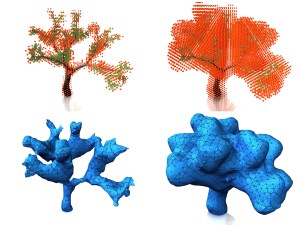
We present a new method for simulating volume conserving deformable bodies using an impulse-based approach. In order to simulate a deformable body a tetrahedral model is generated from an arbitrary triangle mesh. All resulting tetrahedrons are assigned to volume constraints which ensure the conservation of the total volume. For the simulation of such a constraint impulses are computed and applied to the particles of the assigned tetrahedrons. The algorithm is easy to implement and ensures exact volume conservation in each simulation step.
@inproceedings{Diziol09,
author = {Raphael Diziol and Jan Bender and Daniel Bayer},
title = {Volume Conserving Simulation of Deformable Bodies},
booktitle = {Short Paper Proceedings of Eurographics},
year = {2009},
month = mar,
address = {Munich (Germany)}
}
Simulating Almost Incompressible Deformable Objects

We present a new method for simulating almost incompressible deformable objects. A tetrahedral model is used to represent and restore the volume during the simulation. The new constraint computes impulses in the onering of each vertex of the tetrahedral model, in order to conserve the initial volume. With different parameters, the presented method can handle a large variety of different deformation behaviors, ranging from stiff to large deformations and even plastic deformations. The algorithm is easy to implement and reduces the volume error to less than 1% in most situations, even when large deformations are applied.
@inproceedings{Diziol09,
author = {Raphael Diziol and Daniel Bayer and Jan Bender},
title = {Simulating Almost Incompressible Deformable Objects},
booktitle = {Virtual Reality Interactions and Physical Simulations (VRIPhys)},
year = {2009},
month = nov,
address = {Karlsruhe (Germany)},
pages = {31-37}
}
Optimized impulse-based dynamic simulation
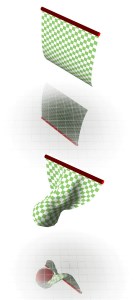
The impulse-based dynamic simulation is a recent method to compute physically based simulations. It supports the simulation of rigid-bodies and particles connected by all kinds of implicit constraints. In recent years the impulse-based dynamic simulation has been more and more used to simulate deformable bodies as well. These simulations create new requirements for the runtime of the method because very large systems of connected particles have to be simulated to get results of high quality. In this paper several runtime optimizations for the impulse-based dynamic simulation are presented. They allow to compute the same simulations at a fraction of time needed for the original method. Therefore, larger systems or simulations with increased accuracy can be simulated in realtime.
@inproceedings{Bayer09,
author = {Daniel Bayer and Raphael Diziol and Jan Bender},
title = {Optimized Impulse-Based Dynamic Simulation},
booktitle = {Virtual Reality Interactions and Physical Simulations (VRIPhys)},
year = {2009},
month = nov,
address = {Karlsruhe (Germany)},
pages = {125-133}
}
Dynamic simulation of inextensible cloth
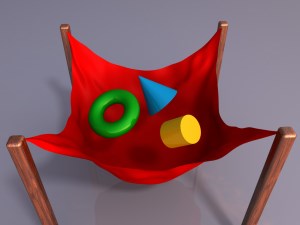
In this paper an impulse-based method for cloth simulation is presented. The simulation of cloth is required in different application areas like computer animation, virtual reality or computer games. Simulation methods often assume that cloth is an elastic material. With this assumption the simulation can be performed very efficiently using spring forces. The problem is that many textiles cannot be stretched significantly. A realistic simulation of these textiles with spring forces leads to stiff differential equations which cause a deterioration of performance. The impulse-based method described in this paper solves this problem and allows the realistic simulation of inelastic textiles.
@article{Bender2009,
author = {Jan Bender and Daniel Bayer and Raphael Diziol},
title = {Dynamic simulation of inextensible cloth},
journal = {IADIS International Journal on Computer Science and Information Systems},
volume = {4},
number = {2},
year = {2009},
pages = {86--102}
}
Impulse-based dynamic simulation on the GPU
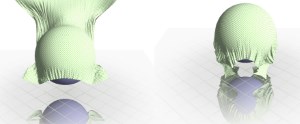
In this paper a new, efficient method for dynamic simulation on the GPU is presented. The method is based on an impulse-based approach which is an ideal candidate to simulate on limited hardware due to its simplicity. The proposed method shows how the impulse-based dynamic simulation can benefit from the highly parallel structure of the GPU without suffering too much losses by its limitations. This is achieved by the use of a new way to solve constraints. Most parts of the actual computation can be done in parallel, using only a few number of operations. This allows the implementation to run on a wide range of graphics boards.
@inproceedings{Bayer09,
author = {Daniel Bayer and Jan Bender and Raphael Diziol},
title = {Impulse-based dynamic simulation on the GPU},
booktitle = {Computer Graphics and Visualization (CGV 2009) - IADIS Multi Conference on Computer Science and Information Systems},
year = {2009},
month = jun,
address = {Algarve (Portugal)}
}
Parallel simulation of inextensible cloth
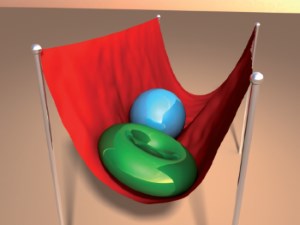
This paper presents an efficient simulation method for parallel cloth simulation. The presented method uses an impulse-based approach for the simulation. Cloth simulation has many application areas like computer animation, computer games or virtual reality. Simulation methods often make the assumption that cloth is an elastic material. In this way the simulation can be performed very efficiently by using spring forces. These methods disregard the fact that many textiles cannot be stretched significantly. The simulation of inextensible textiles with methods based on spring forces leads to stiff differential equations which cause a loss of performance. In contrast to that, in this paper a method is presented that simulates cloth by using impulses. The mesh of a cloth model is subdivided into strips of constraints. The impulses for each strip can be computed in linear time. The strips that have no common particle are independent from each other and can be solved in parallel. The impulse-based method allows the realistic simulation of inextensible textiles in real-time.
@inproceedings{Bender08,
author = {Jan Bender and Daniel Bayer},
title = {Parallel simulation of inextensible cloth},
booktitle = {Virtual Reality Interactions and Physical Simulations (VRIPhys)},
year = {2008},
month = nov,
address = {Grenoble (France)},
pages = {47-56}
}
Impulse-based simulation of inextensible cloth

In this paper an impulse-based method for cloth simulation is presented. The simulation of cloth is required in different application areas like computer animation, virtual reality or computer games. Simulation methods often assume that cloth is an elastic material. With this assumption the simulation can be performed very efficiently using spring forces. The problem is that many textiles cannot be stretched significantly. A realistic simulation of these textiles with spring forces leads to stiff differential equations which cause a deterioration of performance. The impulse-based method described in this paper solves this problem and allows the realistic simulation of inelastic textiles.
@inproceedings{Bender08,
author = {Jan Bender and Daniel Bayer},
title = {Impulse-based simulation of inextensible cloth},
booktitle = {Computer Graphics and Visualization (CGV 2008) - IADIS Multi Conference on Computer Science and Information Systems},
year = {2008},
month = jul,
address = {Amsterdam (Netherlands)}
}
Vergleich der impulsbasierten Dynamiksimulation mit der Lagrange-Faktoren-Methode

Eine der am weitesten verbreiteten Methoden zur Simulation von mechanischen Starrkörpersystemen ist die Lagrange-Faktoren-Methode (LFM). Die impulsbasierte Dynamiksimulation ist ein neuer alternativer Ansatz zur Simulation solcher Systeme. Durch den direkten Vergleich werden in dieser Arbeit die Vor- und Nachteile der beiden Methoden aufgezeigt. Dazu wird neben einer Laufzeit- und Genauigkeitsmessung zusätzlich ein informeller Vergleich durchgeführt und die Ergebnisse diskutiert.
@inproceedings{Bayer08,
author = {Daniel Bayer and Jan Bender},
title = {Vergleich der impulsbasierten Dynamiksimulation mit der Lagrange-Faktoren-Methode},
booktitle = {5. Workshop "Virtuelle und Erweiterte Realität der Fachgruppe VR/AR"},
year = {2008},
month = sep,
address = {Magdeburg (Germany)},
pages = {185-196}
}

